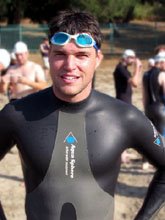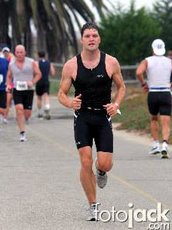Since I'm hanging my hat in the Pacific Northwest at the moment, I thought I'd spend some time talking about knees.
Wha--?
I went for a long walk yesterday, trying to jam some of Shakespeare's words into my cranium in such a way that they'd stick. At the end of my walk I realized that I was experiencing some knee pain, which is one kind of pain I haven't experienced much of over the years. Oh sure, I've got a football injury from my freshman year in high school, when the wiry and sickeningly strong Mike Rich tackled me in such a way that my right foot was pinned to the ground whilst I tried desperately to escape by twisting my upper body like some upright, mangled worm, causing unfamiliar alarm bells to go off in my knee. Nothing popped--thank God for supple teenage connective tissue--but every now and I'll be hiking or walking down a steep hill and my knee will give me occasion to think of my good friend Mike Rich.
But, generally, my knees have been pretty healthy, thank goodness, so when I mentioned my knee pain to a local friend, she said, "Oh yeah--that just happens up here. It's the moisture."
I'm glad it's not my cartilage.
So, what's the deal with knee pain?
Shamelessly stealing Mike Boyle's formula,(which he admits to shamelessly stealing from Gray Cook), I've had some good luck recently with addressing clients' knee problems by working on the ankle and the hip joints. That's sort of counterintuitive, but it makes sense: the knee is a pretty simple joint, after all. It just bends in one direction. The ankle and the hip joints are, by comparison, much more complex. There's more room for error and a far greater likelihood of faulty movement patterns that will gradually wear on the knees. Far more effective to address those problems than simply to do endless sets of leg extensions and curls, which may help stabilize the knee but don't address the actual cause of the problem, which is, generally speaking, is those poor movement habits.
In the Boyle formulation, the knee is a joint that needs stability. The last thing you want is a "flexible" knee joint--which is why you don't see anyone in their right mind doing "knee hyperextensions" in the gym (unless they're in the MMA studio, in which case the hyperextendee probably isn't too happy about it). The joints above and below the knee need optimal mobility, so you DO see people stretching their hips and ankles. The butterfly stretch, the runner's stretch, and the calf stretch are all familiar to people with even the most rudimentary gym experience.
If your hip and ankles are supple and responsive, your knees will be much more likely to stay healthy. If they're not, you're pretty much guaranteed to hurt yourself at some point.
For the ankles, make sure you're keeping your calves not just strong, but also loose and flexible as well. Stretch both the upper and lower calves by performing ankle stretches both with the knee joints locked and slightly bent. Circling the ankles and performing standing hip circles to ensure optimal mobility in all directions is also helpful.
For the hips, one of the best moves is the kneeling hip flexor stretch, which I've mentioned in previous posts. Not only will that move help inhibit the frequently-overactive hip flexors, it will also help facilitate glute activation, and inactive glutes are also an indirect cause of knee pain. If your butt muscles aren't a-firing, your knees will suffer for it. Any lying bridge exercise will help activate those muscles too, as will as side leg raises, and, one of my new personal favorites, elastic band side shuffle.
1) Grab the handles of a resistance band. Stand on the center of the band with both feet, keeping about eight inches between your feet. Hold the handles at the sides of your waist at belt level.
2) Walk laterally to your right, stretching the band as far as possible with each step. Continue for 10-15 steps. Repeat movement moving to your left.
Squatting form is also key to knee health. Many people squat by trying to keep the torso upright and driving the knees forward. Instead, always think of sitting into a chair: the movement starts at the hips.
Finally lengthening the adductors--or inner thigh muscles--can also be helpful. The traditional butterfly stretch is a great one for this, but you can get creative with all kinds of weird yoga stretches as well.
Summing up, ankle mobility, flexibility and mobility in the hip flexors and adductors, good squatting form, and glute activation can go a long way towards keeping your knees healthy.
Failing that, stay out of the Northwest during the rainy season.
Subscribe to:
Post Comments (Atom)




No comments:
Post a Comment